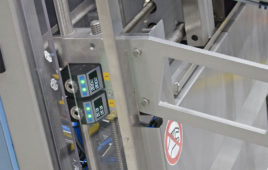Innovative devices like the IoT are making technologies “smarter” and ubiquitous parts our everyday lives. From achieving daily routine tasks to managing massive commercial and industrial networks, smart technology is changing the way we conduct our routines and even how our businesses operate. Advances in connected and autonomous vehicles are very well-documented, and make for some interesting headlines, but one particular sector that doesn’t get enough attention on how it’s benefiting from these innovative technological advances is nautical.
Both small- and large-scale plans of developing autonomous and unmanned vessels have started, with some models and concepts already being tested in public waters. Aside from still being in its infancy, smart shipping is faced with its own set of problems that present some great challenges. From mainstream vulnerabilities all connected technologies are susceptible to like cybersecurity, to more unique issues like navigational concerns, the challenges and risks associated with smart shipping make it unlike any other sector in the innovation industry. The infographic below lists some of the biggest risks and challenges that come with smart shipping, along with other aspects like industry segments and the main systems these crafts utilize.

(Image Credit: Safety4Sea)
Filed Under: Cybersecurity, Automotive, M2M (machine to machine)




